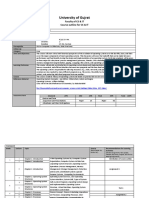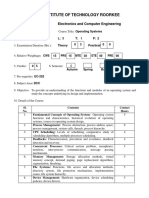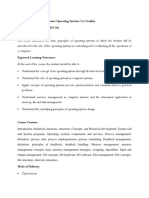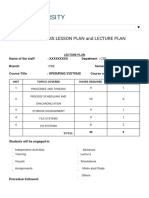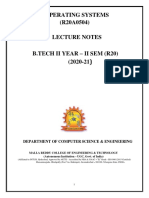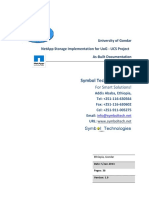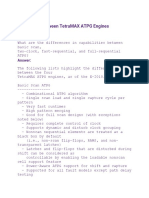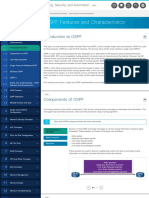0% found this document useful (0 votes)
58 views6 pagesOperating Systems
This document outlines a course on operating systems, including information on the course code, title, credit hours, duration, prerequisites, instructor, and schedule. The course aims to provide an in-depth understanding of OS services like threads, inter-process communication, synchronization, and memory and file systems. Students will be evaluated based on quizzes, assignments, a midterm, lab work, attendance, and a final exam. Over 15 weeks, topics like scheduling, concurrency, deadlocks, and memory management will be covered from referenced textbook chapters.
Uploaded by
world of knowledgeCopyright
© © All Rights Reserved
We take content rights seriously. If you suspect this is your content, claim it here.
Available Formats
Download as DOCX, PDF, TXT or read online on Scribd
0% found this document useful (0 votes)
58 views6 pagesOperating Systems
This document outlines a course on operating systems, including information on the course code, title, credit hours, duration, prerequisites, instructor, and schedule. The course aims to provide an in-depth understanding of OS services like threads, inter-process communication, synchronization, and memory and file systems. Students will be evaluated based on quizzes, assignments, a midterm, lab work, attendance, and a final exam. Over 15 weeks, topics like scheduling, concurrency, deadlocks, and memory management will be covered from referenced textbook chapters.
Uploaded by
world of knowledgeCopyright
© © All Rights Reserved
We take content rights seriously. If you suspect this is your content, claim it here.
Available Formats
Download as DOCX, PDF, TXT or read online on Scribd
/ 6




